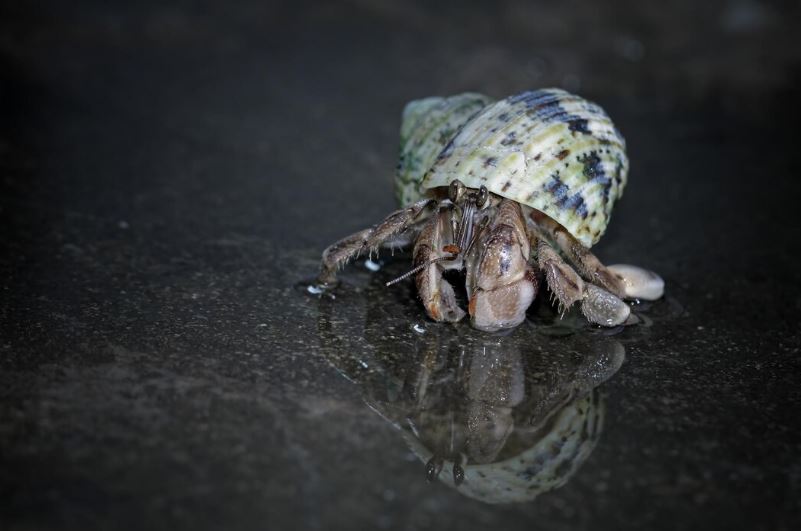
Mild conditions thousands of meters below the water’s surface are home to deep sea mollusks. Complete darkness, frigid temperatures, and tremendous pressure await them. In the dark, bioluminescence draws in prey or confuses predators, allowing many animals to survive.
Lighter and more pliable are the shell architecture of these mollusks. They are able to withstand the immense pressures of the ocean bottom because of this. Big squid and similar creatures can see very dim light from far away and even illuminate other living things with their big eyes.
Key Facts About Deep Ocean Mollusks
| Category | Details |
|---|---|
| Habitat | Bathyal, Abyssal, Hadal zones |
| Common Species | Giant Squid, Dumbo Octopus, Vampire Squid |
| Depth Range | 200m to 11,000m |
| Temperature | -1°C to 4°C |
| Feeding Habits | Scavengers, Predators, Filter Feeders |
| Adaptations | Bioluminescence, Pressure Resistance |
| Notable Zones | Mariana Trench, Hydrothermal Vents |
A Lifesaver: Bioluminescence
To survive in the deep ocean, mollusks rely on bioluminescence. The vampire squid wards off predators with its luminous mucus. Other mollusks are able to communicate and attract mates with the use of photophores, which are organs that produce light. Bioluminescent light is even a means of camouflage for some species.
This change isn’t merely a defensive measure. Mollusks that hunt at night employ bioluminescence to entice their prey that isn’t looking. By employing this tactic, they have managed to establish a firm grasp on specific marine ecosystems.
Massive Subterranean Beings
The ocean floor is home to some of the biggest mollusks on Earth. One of the most enigmatic creatures, the giant squid can reach a length of more than thirteen meters. Even larger and equipped with strong tentacle hooks for preying, the colossal squid is its gigantic relative.
These creatures seem to evade capture no matter how large they are. Animal remains found in fishing nets or washed up on beach provide the bulk of our scientific understanding. Their subterranean environments make live sightings incredibly unusual.
Mollusk Oases: Hydrothermal Vents
Subterranean ecosystems that rely on chemical energy instead of solar radiation are known as hydrothermal vents. This environment is ideal for mollusks that depend on chemosynthetic bacteria, such as the Bathymodiolus mussel. In order to generate energy, these microbes transform the hydrogen sulfide found in vent plumes.
Nearby water temperatures near these vents can exceed 350°C. These secluded environments are home to mollusks that have adapted to survive in the scorching heat. The tenacity of marine life is on full display in these settings.
What Deep-Sea Mollusks Eat
Mollusks living in the deep sea have developed a wide variety of diets. Snails and limpets are examples of scavengers that prey on decaying organic matter that sinks to the bottom of the ocean. Nutrients from the ocean floor’s sediments are extracted by deposit feeders.
Some species of squid and other predatory mollusks use their beaks to spear and devour smaller marine organisms. In order to filter the water for small food particles, filter feeders such as deep-sea clams use their gills. The limited availability of food in their habitats influences these behaviors.
Keeping Alive in the Dark: Trench Mollusks
One of the most hostile underwater environments is the submarine trench. The local mollusk population subsists mostly on decaying vegetation, wood, and animal bones. These distinct ecosystems are primarily inhabited by limpets and wood-boring clams.
A “short-circuit” in conventional deep-sea food chains is illustrated by these organisms. Rather than relying on organic particles that fall from the sky, trench mollusks consume larger organic deposits directly.
Adapting to High-Pressure Situations
The hydrostatic pressures that deep-sea mollusks face rise by one atmosphere for every ten meters of depth. They are able to maintain normal metabolic rates even at extremely low pressures.
These species will not “explode” when taken to the surface, contrary to common myth. They are able to withstand pressure changes without suffering catastrophic damage because their bodies are filled with fluid and do not have enclosed gas chambers, similar to fish swim bladders.
Deep-Sea Mollusks: An Important Part of Ecosystems
To keep ecosystems in check, deep-sea mollusks are vital. By decomposing organic matter, scavenger animals are able to recycle nutrients. In order to keep prey populations stable, predators control their numbers.
By removing particles from the water, filter feeders help make it clearer. Their calcium carbonate shells continue to contribute to the ocean floor long after they die, helping to stabilize sediment formations in the deep sea.
Dangers Endangering Mollusks in the Deep Sea
Many mollusk communities in the deep ocean are in danger due to human activities. Minerals from hydrothermal vents are the targets of deep-sea mining, which destroys important habitats. Damage to mollusks and the ecosystems they rely on is another consequence of plastic pollution in the deep sea.
Ocean oxygen levels and temperature gradients are affected by climate change. Species living in the deep sea may have no choice but to adapt to these changes or perish. The survival of these rare animals depends on our conservation efforts.
New Scientific Findings and Experiments
Amazing new information on mollusks has been uncovered through deep-sea study. Scientific research on these animals has been made possible by technological advancements such as deep-sea submersibles and remotely operated vehicles (ROVs).
New evidence, like the fluorescent sea slug Bathydevius, shows how little is known about marine life. There will be many more discoveries along the road if we keep digging.
Why Conservation Efforts Matter
International collaboration and conscientious environmental policy are necessary for the preservation of deep-sea mollusks. One way to lessen the human influence on delicate underwater ecosystems is to create marine protected areas there.
An important part of conservation efforts is raising public awareness. People may fight for improved conservation and resource management of these ecosystems if they realize how important they are.
Frequently Asked Questions (FAQs)
- What are deep ocean mollusks?
They are marine animals like squid, octopuses, and clams living in extreme deep-sea environments. - How do deep ocean mollusks survive under pressure?
Their bodies and shells are adapted to withstand immense hydrostatic pressure. - What do deep ocean mollusks eat?
They are scavengers, predators, or filter feeders, depending on their species. - Why are hydrothermal vents important for mollusks?
Vents provide a chemical energy source that supports unique ecosystems. - Are deep ocean mollusks endangered?
Many species face threats from deep-sea mining and pollution.
